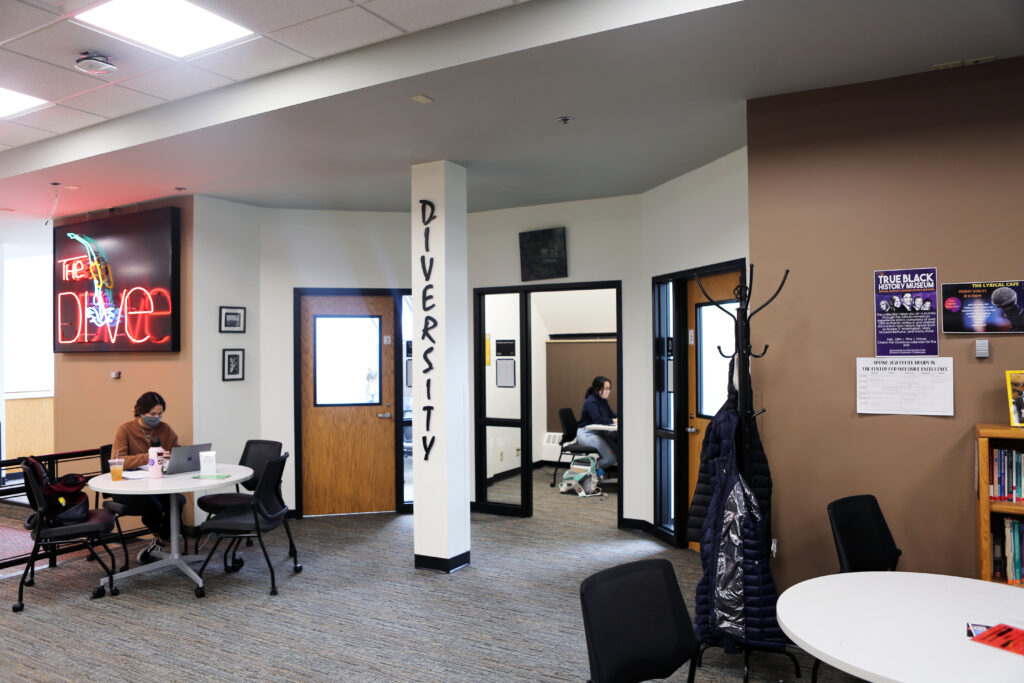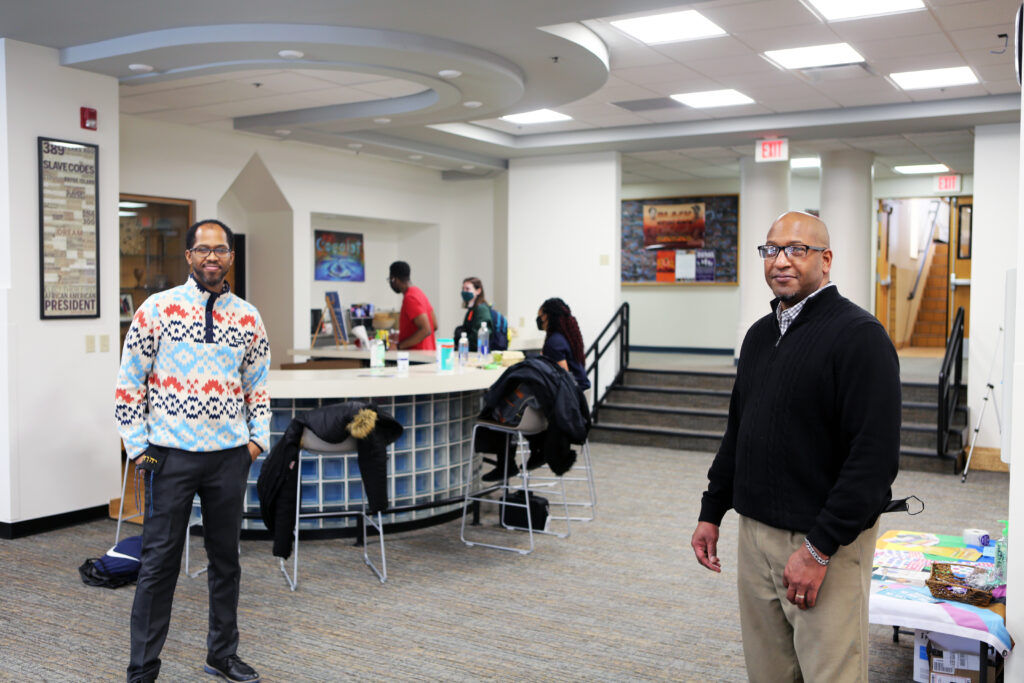Gustavus students returning to campus for spring semester were greeted by a new community-building space in the form of a renovated and expanded Center for Inclusive Excellence, and it’s already taking off as a popular gathering spot.
“When you walk into this space for the first time, you can feel it,” Center for Inclusive Excellence (CIE) director Tom Flunker said. “Once the students knew that the space was useable, they started showing up.”
The new space, located in the former home of “The Dive” in the Johnson Student Union, is more than four times larger than the CIE’s previous location in the Jackson Campus Center and includes 966 square feet of new offices and 3,127 square feet for program offerings and common areas. The iconic wood floor and pool tile of “The Dive,” a remnant of the building’s history and favorite of generations of Gustavus alumni, remains.

“When students walk in, their faces light up,” Flunker added. “I’m already connecting with Gusties I’d never met before who are coming in, exploring this welcoming space, and sharing their excitement and ideas for greater inclusiveness and more activities.”
The Center for Inclusive Excellence, formerly known as the Diversity Center, is the physical home of the College’s diversity, equity, and inclusion work and a popular gathering space for students. In partnership with the President’s Council on Diversity, Equity, and Inclusion and a variety of student groups, the Center offers programs, provides support, and builds community networks that advance Gustavus racial justice and inclusion efforts. The Center for Inclusive Excellence evolved out of a rich history that began in the 1960s and early ’70s.
For assistant director Kareem Watts, who joined the Gustavus community earlier this month after serving as the associate director of leadership development and student engagement at Greenville University in Illinois, the new space represents the College’s commitment to diversity, equity, and inclusion.
“I was drawn to this position because of all the initiatives coming out of the Center for Inclusive Excellence, things like the First Forward (a networking program for first-generation students), the Womxn of Color Summit, and other social justice movements,” said Watts, who grew up in Los Angeles and was a first-generation undergrad himself at Biola University in California. “From the Board of Trustees to first-year students, Gustavus is committed to antiracism and racial justice.”
“Coming into this role and this new space, I’m really hoping to build relationships with faculty, staff, and especially our students and student leaders,” Watts added. “There are a lot of opportunities here for students to grow and develop, and I’m excited to be a part of their journey.”

One of those points of connection for Watts is a new Lyrical Café, an event held every fourth Friday in which students can share their talents in music, poetry, dancing, or other lyrical art in an open mic setting that is available both in-person (with social distancing and capacity restrictions) and virtually.
“I look forward to students expressing their culturally diverse gifts and talents while building community at the same time,” Watts said.
For Flunker, that opportunity to build community is one of the key benefits of the new space.
“This is a place where all of our groups can feel comfortable, where they can have meetings and build collaborations for their academic and justice-focused work,” Flunker said. “More than that though, the space represents a much larger idea, a commitment to addressing the things we need to address as a community and highlighting the work of our students at a higher level.”
“Either America will destroy ignorance, or ignorance will destroy the United States,” Watt added, sharing a quote from W.E.B. DuBois. “That’s an important quote now, during Black History Month, but it’s even more important to me after seeing new calls for racial justice in 2020.”
“I’m excited, but more than that I’m hopeful,” Flunker continued. “This long-term vision has become a reality, and I’m glad our students can see this manifest along with the other racial justice and inclusion initiatives that are happening on campus.”